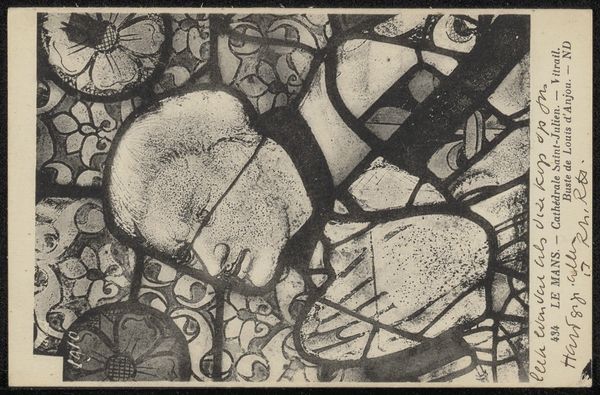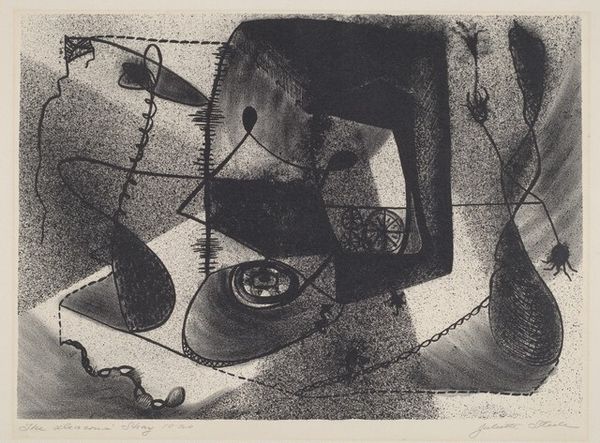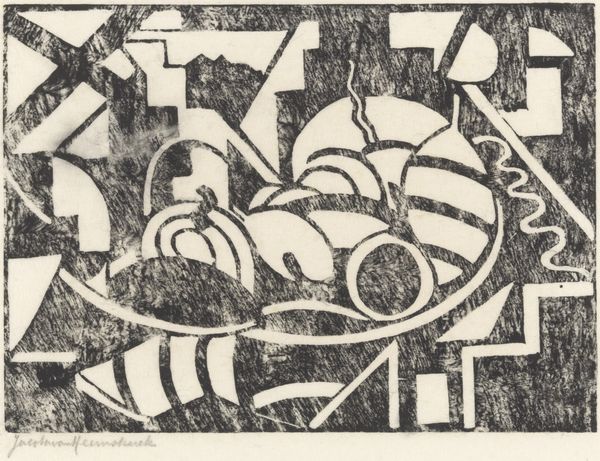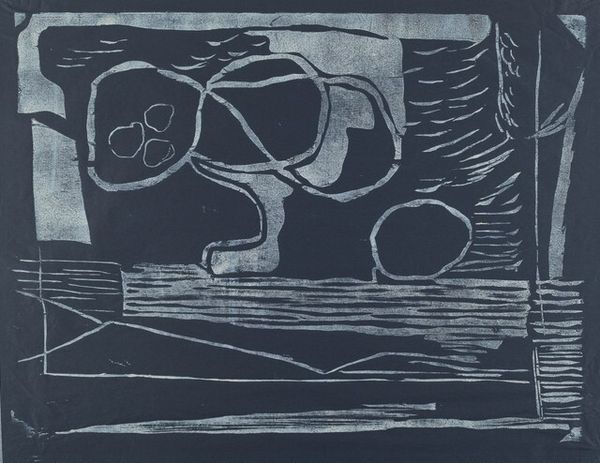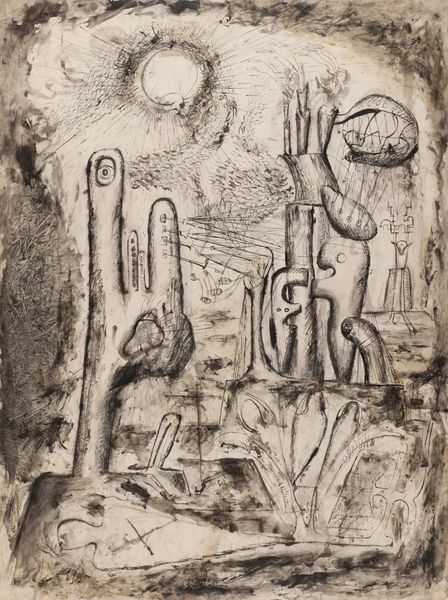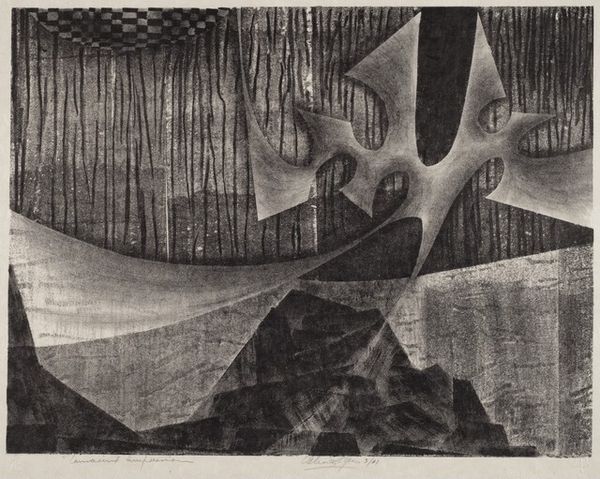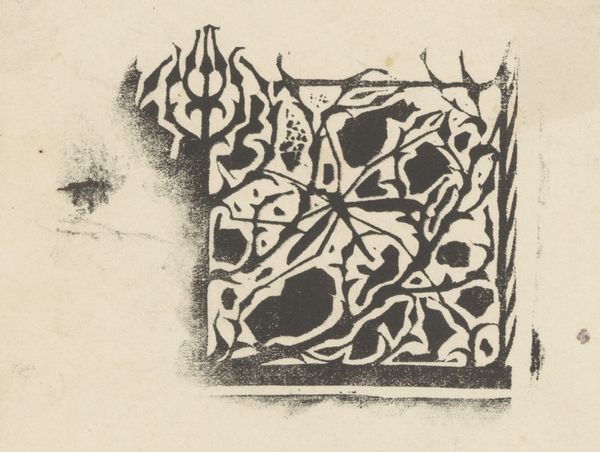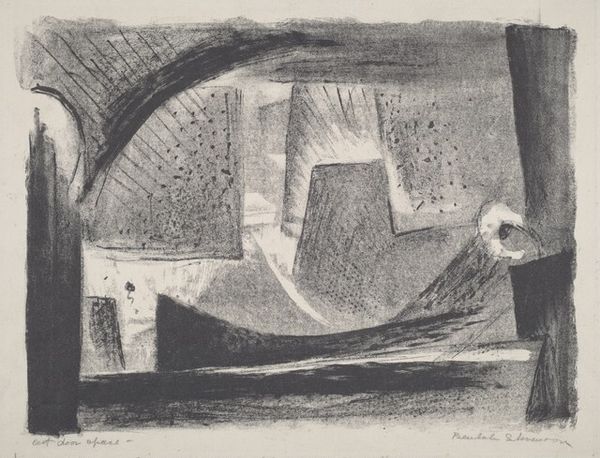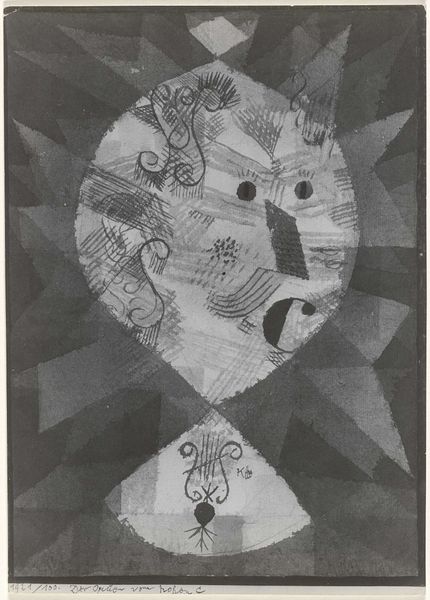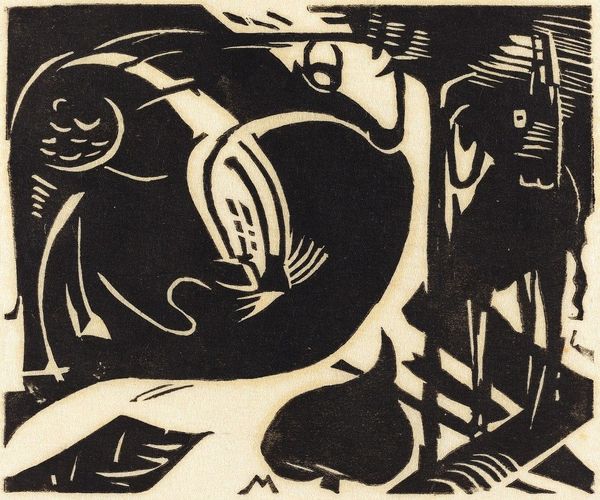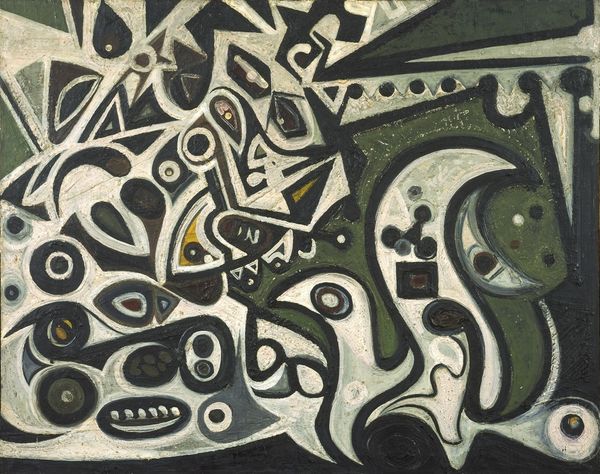
drawing, paper, ink
#
abstract-expressionism
#
drawing
#
sculpture
#
paper
#
ink
#
chalk drawing
#
coloured pencil
#
geometric
#
abstraction
#
line
#
modernism
Copyright: Alexander Calder,Fair Use
Editor: Here we have Alexander Calder’s "The Big I," created in 1944 using ink, colored pencil, and paper. The geometric shapes give it a playful yet mysterious mood, especially with that prominent "I" shape. What do you see in this piece? Curator: This work, like much of Calder's output, encourages us to consider the relationship between materials, process, and the broader cultural context. The immediate postwar period witnessed material scarcity; the use of humble materials like paper and ink speaks to the artist's resourcefulness but also the limitations placed on artistic production at the time. Consider the implications of repurposing "low" materials in the making of "high" art. Do you think Calder's choice of medium affects the reading of his work? Editor: Definitely! It makes it feel more accessible and grounded, less precious somehow. But I am curious about his interest in geometry, what kind of labor could be associated with that visual language in the 1940s? Curator: Geometric forms link the drawing to both industrial production and scientific visualization which are intertwined discourses of the war effort and technological progress. What does it mean to use the grid as a means of liberation of form, like the Surrealists tried to do? In this era abstraction also afforded a layer of meaning and protection from totalitarian regimes who prescribed the art. Calder challenges traditional art categories by embracing a democratic range of materials. Editor: So it's not just about the shapes themselves, but also the context of how those shapes and materials were being used and understood at the time. Curator: Exactly! It pushes us to consider how artists negotiate material constraints and social expectations while producing meaning. Editor: That's a very different way of looking at abstract art. I appreciate learning about this interplay. Thanks!
Comments
No comments
Be the first to comment and join the conversation on the ultimate creative platform.

